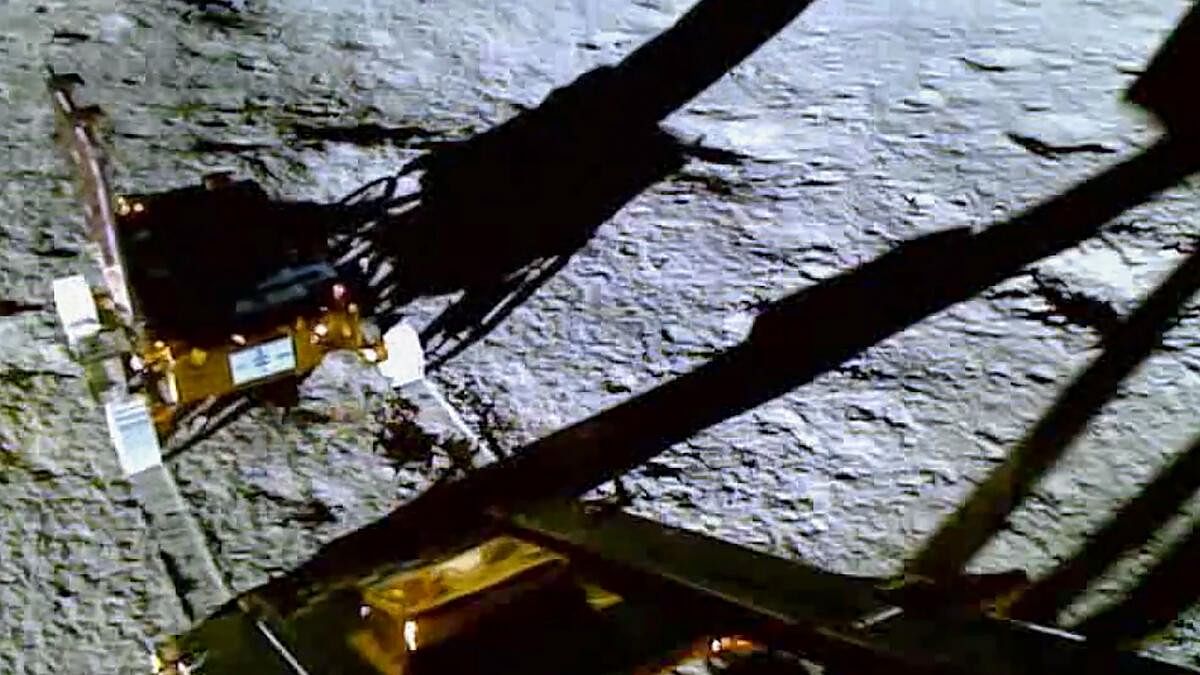
ISRO's Chandrayaan-3 lunar mission.
Credit: PTI File Photo
New Delhi: The first scientific results from Chandrayaan-3 have provided fresh evidence for a long-standing hypothesis that the entire moon was covered by hot molten rock - a liquid magma ocean - early after its formation.
The results – released on Wednesday in a study published in Nature - came from 23 sets of chemical measurements of the lunar soil carried out by an instrument aboard the Pragyan rover during the Chandrayaan-3's two-week long mission near the lunar south pole in Aug-Sep last year.
The publication by Indian scientists comes a day ahead of the first anniversary of Chandrayaan-3‘s landing, which will be celebrated as the national space day.
“Our instrument examined the elemental composition of the surface. The measurements it took show the composition near the lunar south pole is uniform and similar to that of the highlands. This is a validation of the LMO (lunar magma ocean) hypothesis,” Santosh V Vadawale, a geologist at the Physical Research Laboratory, Ahmedabad and corresponding author of the study told DH.
The moon is thought to have originated with a magma ocean across its entire surface that persisted for 200 million years after which the rocks began to cool and solidify eventually leading to its rocky body.
The Chandrayaan-3 measurements confirm the uniform presence of a type of the lunar rock, produced by the ocean of hot molten rocks.
“Although lunar magma ocean is the most widely accepted scenario for the early evolution of the moon, there are some questions on this hypothesis based on a recent reanalysis of some of the Apollo samples. The measurements by the Alpha Particle X-Ray Spectrometer now support the LMO hypothesis,” he said.
India’s third mission to the moon landed near the satellite’s south pole on Aug 23 and carried out scientific measurements for nine days. The automated rover roamed around the landing site – named Shiv Shakti Point - traversing a distance of 103 mt.
The spectrometer was powered on 30 times in those days and measurements were taken at 23 rover stop locations including spots on rover tracks that had more depth. The longest observation was for 175 min while the shortest one was for 20 min.
“The measurement also shows a slightly higher abundance of Magnesium, which is a proof of mixing of some materials from the interior of the moon,” said Anil Bhardwaj, PRL director and one of the co-authors of the study.
The analysis by researchers at PRL, U R Rao Satellite Centre, Bengaluru; Space Applications Centre, Ahmedabad and Hemvati Nandan Bahuguna University, Srinagar also provide new data on how the South Pole Aitken basin – the biggest impact crater on the moon – threw up materials to a distance of nearly 350 km.
Bhardwaj said the uniformity in measurements around the Shiv Shakti Point suggests that the area could be used as an “excellent ground truth” for remote sensing observations and calibrate the spectroscopes for future missions.
“The Indian Space Research Organisation now plans Chandrayaan-4 & 5 missions. While Chandrayaan-4 is tentatively scheduled for launch in 2027, Chandrayaan-5 will be a joint mission with the Japan Aerospace Exploration Agency,” an ISRO official said.
